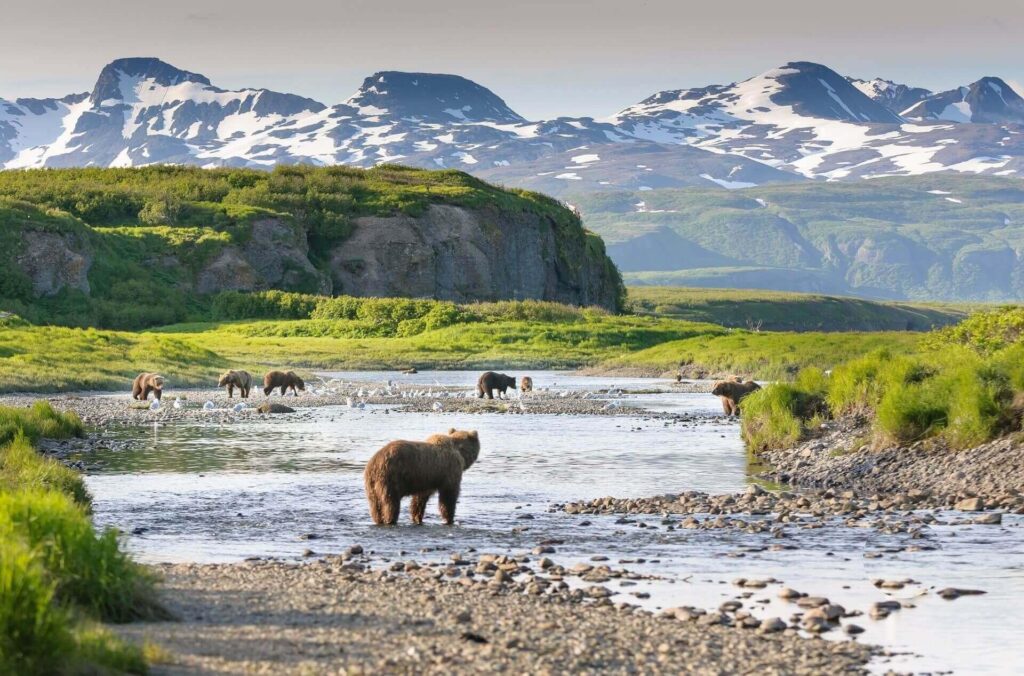Alaska has been ranked as the worst state for business in America in 2025, according to a recent CNBC report. The state’s economy continues to suffer as falling oil prices severely undermine its primary revenue source, exacerbating fiscal challenges and deterring investment. Once buoyed by energy wealth, Alaska now faces mounting economic uncertainty, with businesses and policymakers grappling to navigate an environment marked by declining revenues and reduced economic activity.
Alaska’s Economic Downturn Driven by Plunging Oil Prices and Reduced Investment
Alaska’s economic landscape has taken a sharp downturn, primarily due to a sustained decline in global oil prices that has severely impacted state revenues. As the backbone of Alaska’s economy, oil extraction once fueled growth and investment, but with prices plummeting, production levels and profits have sharply contracted. The knock-on effects are evident across multiple sectors, with diminished capital flowing into infrastructure projects and local businesses. Additionally, the uncertainty surrounding energy markets has caused both public and private investors to adopt a cautious stance, further exacerbating economic stagnation throughout the state.
Key factors contributing to the downturn include:
- Reduced oil production leading to lower tax revenue
- Significant drop in investment for new energy projects
- Rising unemployment and outmigration as job opportunities shrink
- Declining consumer spending impacting retail and service industries
| Economic Indicator | 2019 | 2025 (Projected) |
|---|---|---|
| Oil Price per Barrel | $60 | $35 |
| State Oil Revenue ($B) | 3.4 | 1.2 |
| Unemployment Rate | 6.5% | 10.2% |
| Private Investment ($M) | 280 | 105 |
Challenges Facing Businesses Amidst Declining State Revenues and Infrastructure Strains
Businesses in Alaska are grappling with a complex web of economic pressures as the state’s revenue from oil-a critical financial backbone-continues to shrink. The decline in oil prices has directly reduced the funds available for public services and infrastructure development, leaving companies to operate amid crumbling roads, limited utilities, and outdated facilities. These conditions have ramped up operational costs and forced many businesses to reconsider expansion plans or delay critical investments.
Compounding these challenges are increasing regulatory hurdles and workforce shortages exacerbated by the economic downturn. Entrepreneurs face difficulties such as:
- Escalating logistical costs due to limited infrastructure support
- Unreliable access to utilities impacting production schedules
- Reduced consumer spending linked to a struggling local economy
| Key Indicator | 2024 | Projection 2025 |
|---|---|---|
| State Oil Revenue ($B) | 3.2 | 2.1 |
| Road Infrastructure Spending ($M) | 750 | 580 |
| Business Closures | 450 | 620 |
Strategic Recommendations for Revitalizing Alaska’s Economy and Attracting New Industries
To reverse Alaska’s economic downturn and reduce dependency on volatile oil revenues, a multipronged approach is essential. First, diversification should be prioritized by incentivizing emerging sectors such as renewable energy, technology, and sustainable fisheries. Tax credits and grants tailored to startups in these fields can stimulate innovation and job creation. Additionally, investing in workforce development programs will equip Alaskans with the skills needed for future industries, ensuring local talent can fill new roles without relying heavily on external labor.
Infrastructure modernization must also be a cornerstone of revitalization efforts. Improving broadband access across remote communities creates a foundation for tech-driven industries and remote work opportunities. Below is a comparison of suggested investment priorities and their potential impact on economic growth:
| Investment Area | Estimated Funding | Projected Economic Impact |
|---|---|---|
| Renewable Energy Projects | $250M | High |
| Broadband Expansion | $150M | Medium |
| Workforce Training | $100M | High |
| Tourism Infrastructure | $75M | Medium |
- Leverage public-private partnerships to maximize funding and expertise.
- Streamline regulatory processes to attract and retain businesses.
- Promote Alaska’s natural advantages to niche markets such as eco-tourism and Arctic research initiatives.
Key Takeaways
As Alaska grapples with the fallout from declining oil prices, its status as America’s worst state for business in 2025 underscores the urgent challenges facing the state’s economy. Policymakers and industry leaders will need to explore new avenues for diversification and sustainable growth to reverse the downward trend and restore economic stability. The coming years will be critical in determining whether Alaska can navigate these headwinds and redefine its business landscape beyond its reliance on oil.
